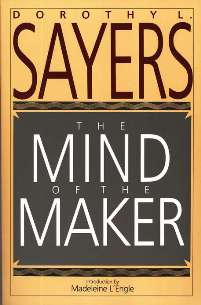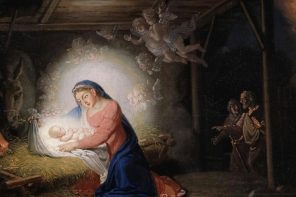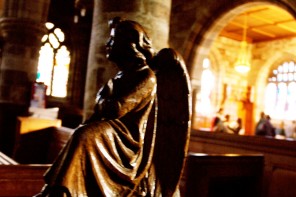 In part I, I proposed to write a series of posts on the role of comparisons between divine and artistic creativity in a Christian theology of art. I suggested that comparisons between divine and artistic creativity are connected to one’s theological approach to the image of God. In this post, part II, I will consider those who make comparisons between divine and artistic creativity and who also take a structural approach to the image of God. This approach follows a very traditional way of conceiving the image of God that distinguishes the imago from the similtudo.[1] The imago refers to something about the structure (being) of humanity, while the similtudo refers to the destiny (becoming) of humanity. Traditionally, those who take a structural approach to the image of God often identify it with an aspect, usually incorporeal, of the human being.
In part I, I proposed to write a series of posts on the role of comparisons between divine and artistic creativity in a Christian theology of art. I suggested that comparisons between divine and artistic creativity are connected to one’s theological approach to the image of God. In this post, part II, I will consider those who make comparisons between divine and artistic creativity and who also take a structural approach to the image of God. This approach follows a very traditional way of conceiving the image of God that distinguishes the imago from the similtudo.[1] The imago refers to something about the structure (being) of humanity, while the similtudo refers to the destiny (becoming) of humanity. Traditionally, those who take a structural approach to the image of God often identify it with an aspect, usually incorporeal, of the human being.
Dorothy Sayers’ The Mind of the Maker is the most extended and complex example of this approach.[2] She develops a comparison between divine creativiy and artistic creativity in remarkable detail, and she suggests that the artistic process—from idea to work to response—can be understood as an image of the trinity.[3] The reason that artistic creativity makes such an excellent analogue to divine creativity is, according to Sayers, because the artist is involved in a process that externalizes features of the ‘world of the imagination’ into the material world. She writes that “this represents the nearest approach we experience to ‘creation out of nothing’…”[4]
A similar sort of approach can be found in Sayers’ French contemporary Jacques Maritain. He begins by observing that God’s “creative Idea” is “in no way formed by its creatable object, it is only and purely formative and forming.”[5] In light of this, Maritain suggests that God knows creation by knowing himself. He then points out that, although “the poet is a poor God,” in a way similar to divine creativity, “poetic creation presupposes, as a primary requirement, a grasping, by the poet, of his own subjectivity, in order to create.”[6] Thus, Maritain suggests that the mind of God and the mind of the artist have a similar sort of relation to their respective creative works.
I mentioned in part I that comparisons between divine and artistic creativity have ethical implications. For those who take the structural approach, their comparisons tend to emphasize the freedom of the artist, in general, and the freedom of the mind over material, in particular. Some who take this approach stress the freedom of the artist to such an extent that the artist appears to be in need of liberation from the material world. This liberation can sometimes be future-oriented: the artist seeks to usher in a new era.[7] Or, this liberation can sometimes be past-oriented: the artist seeks to return humanity to an original, edenic state.[8] Either way, the extreme forms of the structural approach often explicitly or implicitly entangle artistic creativity and sin.[9]
While some who develop comparisons between divine and artistic creativity in this way become embroiled in ethical and theological difficulties, the structural approach insists on a theological point that I think should be embraced: creativity in all its forms is a fundamental part of being human.
Those who take the structural approach typically give comparisons between divine and artistic creativity a central role in their theologies of art. In part III, we will consider thinkers who are very suspicious of comparisons between divine and artistic creativity, and who thus take a very different approach to the image of God.
[1] See Stanley Grenz, The Social God and the Relational Self: A Trinitarian Theology of the Imago Dei, (Louisville: Westminster John Knox Press, 2001) 141-82.
[3] Ibid, 25-36.
[4] Ibid, 23. In a later essay, Sayers retracts her original claim that artistic creativity reflects creatio ex nihilo, and instead focuses on how the incarnation shapes our understanding of image. See “Towards a Christian Aesthetic” (London: V. Gollancz, 1946).






Jim, these posts are very helpful.
Thanks for the feedback!